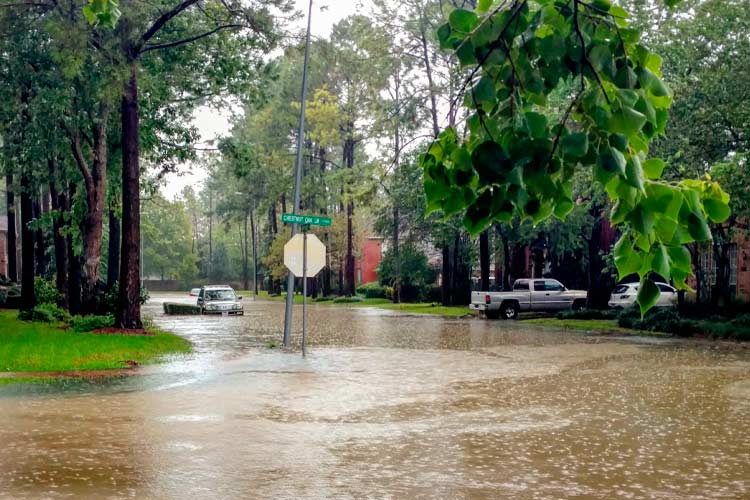
Whether your home is located in a high-risk flood zone or not, the only way to get coverage for damage from natural waters is with proper flood insurance. Natural water damage is excluded from Kentucky homeowners insurance, so you'll need to purchase a separate policy.
The easiest way to do this is through a Kentucky independent insurance agent. Follow these eight steps for buying the best Kentucky flood insurance and you'll be protected in no time.
Step 1: Find an Independent Insurance Agent
Buying flood insurance is not as easy or the same process as other coverages. For one thing, it can only be purchased through the National Flood Insurance Program (NFIP) or through a select number of private insurance sellers. Most people buy coverage through the NFIP, which must be done through an agency or an independent agent.
Fortunately, there are a number of Kentucky independent insurance agents who are experts in purchasing flood insurance for Kentucky residents. Before you do anything, find a local insurance agent to assist you in finding flood insurance.
Step 2: Determine If You're Required to Have Flood Insurance
In Kentucky, if you live in a high-risk flood zone and have a federally regulated mortgage, you'll be required to purchase flood insurance. Your agent can help you determine if you're in a high-risk flood zone or not, but you can also search on your own through Flood Insurance Rate Maps (FIRMs) in the Federal Emergency Management Agency (FEMA) Kentucky Flood Hazard Portal.
In Kentucky, the Divison of Water partners with FEMA to maintain and update Kentucky's flood maps, seeing as flood zones are constantly changing. When looking at the map, areas with the highest risk of flooding are shown as A or AE zones.
Step 3: Understand Your Risk of Flooding in Kentucky
Even if you're not located in a high-risk zone, your home could still be at risk of flooding. In fact, flooding is Kentucky's most frequent and costly natural disaster. No matter where you live, you should consider having some form of coverage.
Potential flood damage causes in Kentucky
- 89,431 miles of rivers and streams
- 637,000 acres of wetlands
- 18 reservoirs over 1,000 acres in size
- 228,382 acres of publicly-owned lakes and reservoirs
- 20% of flood insurance claims are from outside high-risk zones
Keep in mind that there is a 30-day waiting period before your flood policy will kick in. This means you cannot wait until the last minute to purchase.
Step 4: Decide How Much Flood Insurance You Need
When buying flood insurance in Kentucky, you'll need to determine how much coverage you need. The NFIP offers two types of flood coverage:
1) Up to $250,000 for building coverage
2) Up to $100,000 for contents coverage
It's typically encouraged to purchase both, but your agent can help you determine what will work best for you. If you need more coverage than these amounts, you can purchase additional coverage through a private insurer.
Step 5: Prepare Your Home for a Potential Flood
Typically, flood insurance purchased through NFIP is the most cost-effective. But if you're going through private sellers, you may qualify for discounts on your policy by preparing your home for a potential flood.
FEMA outlines specific things you can do to floodproof your home in order to save money on coverage.
4 steps to floodproofing your home
- #1: Elevating your home
- #2: Relocating your home
- #3: Dry floodproofing by sealing all openings below the flood level
- #4: Building levees or floodwalls
Step 6: Purchase a Flood Insurance Plan for Your Kentucky Home
After all the preventive steps have been taken, you're ready to purchase flood insurance. Your Kentucky independent insurance agent will do all the hard work, but you'll want to be prepared to provide any additional paperwork or financials as needed.
If you have any questions about your policy, restrictions, or coverages, just let your agent know.
Step 7: Compare Quotes with Your Agent
Another benefit of purchasing through the NFIP is that you'll get fixed rates on coverage, so you won't have to price shop. However, if you choose a private seller, you'll want to compare quotes between companies.
Your independent insurance agent will shop multiple carriers for you and present you with a number of quotes. They can also give advice about a reputable carrier to work with, seeing as you'd have to file a claim through the carrier if there's a flood.
Step 8: Know How to File a Claim
If your Kentucky home experiences flooding from natural waters, you'll want to file a claim on your flood insurance. Take the following steps immediately after a flood to file a claim.
- Don't return to your home unless it is safe to do so.
- Call your independent insurance agent.
- Document the damage with photos and videos.
- Begin cleaning up if it is safe to do so.
- Work closely with your agent to provide your carrier with necessary information.
An agent is there for you when you're beginning your research on flood insurance, shopping coverages, purchasing a policy, and if you need to file a claim.
No matter where you live in Kentucky, take a few minutes to speak with a Kentucky independent insurance agent today. They'll chat with you, free of charge, to learn about your home, and they can guide you in purchasing the best Kentucky flood insurance.
Article Author | Sara East
https://www.fema.gov/flood-insurance
Steps for preparing home: https://www.fema.gov/pdf/rebuild/mat/sec7.pdf
https://eec.ky.gov/Environmental-Protection/Water/FloodDrought/Documents/KentuckyFloodFactSheet.pdf
https://www.kyfb.com/insurance/insurance-products/flood/
http://www.kymitigation.org/flood-insurance-facts-for-homeowners/
https://www.fema.gov/floodplain-management/community-rating-system
Kentucky water stats: https://kyem.ky.gov/recovery/Documents/CK-EHMP%202018,%20S3-S6,%20Risk%20Assessment,%20Hazard%20Identification,%202,%20Flooding,%20Original%20Submittal.pdf